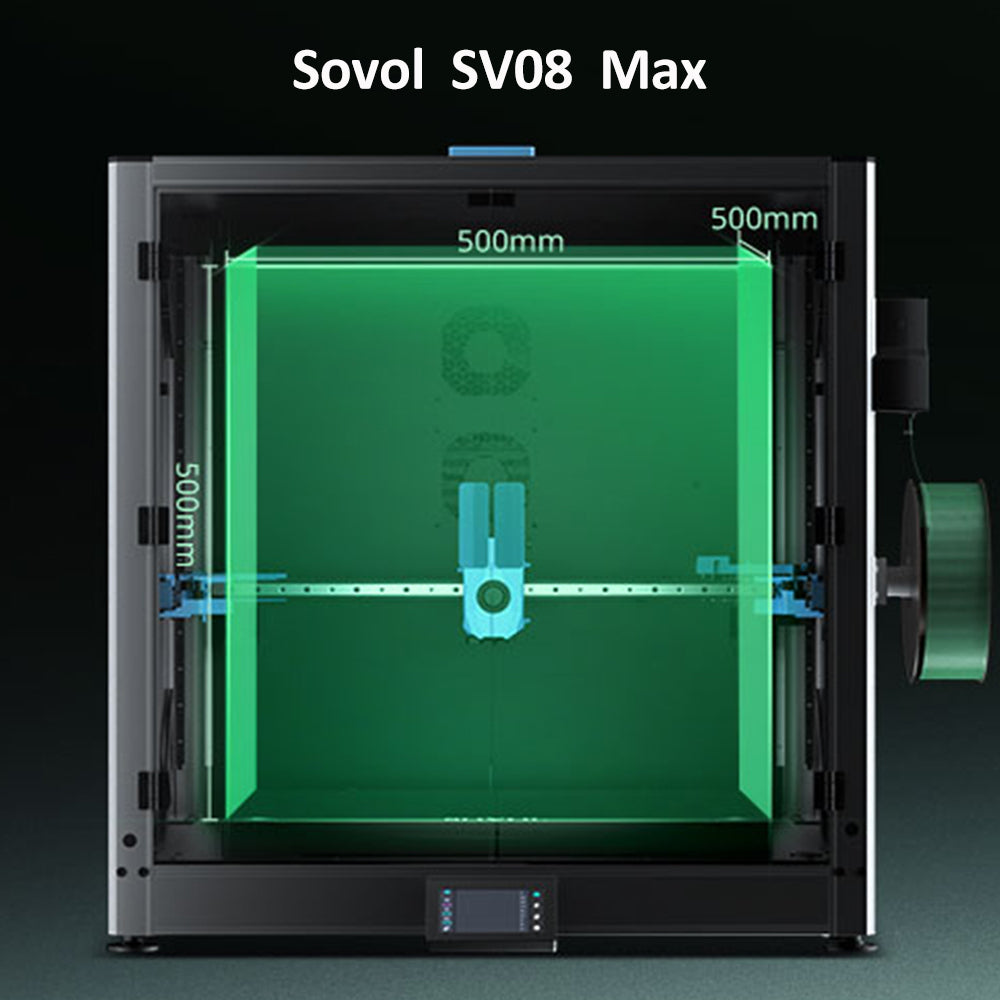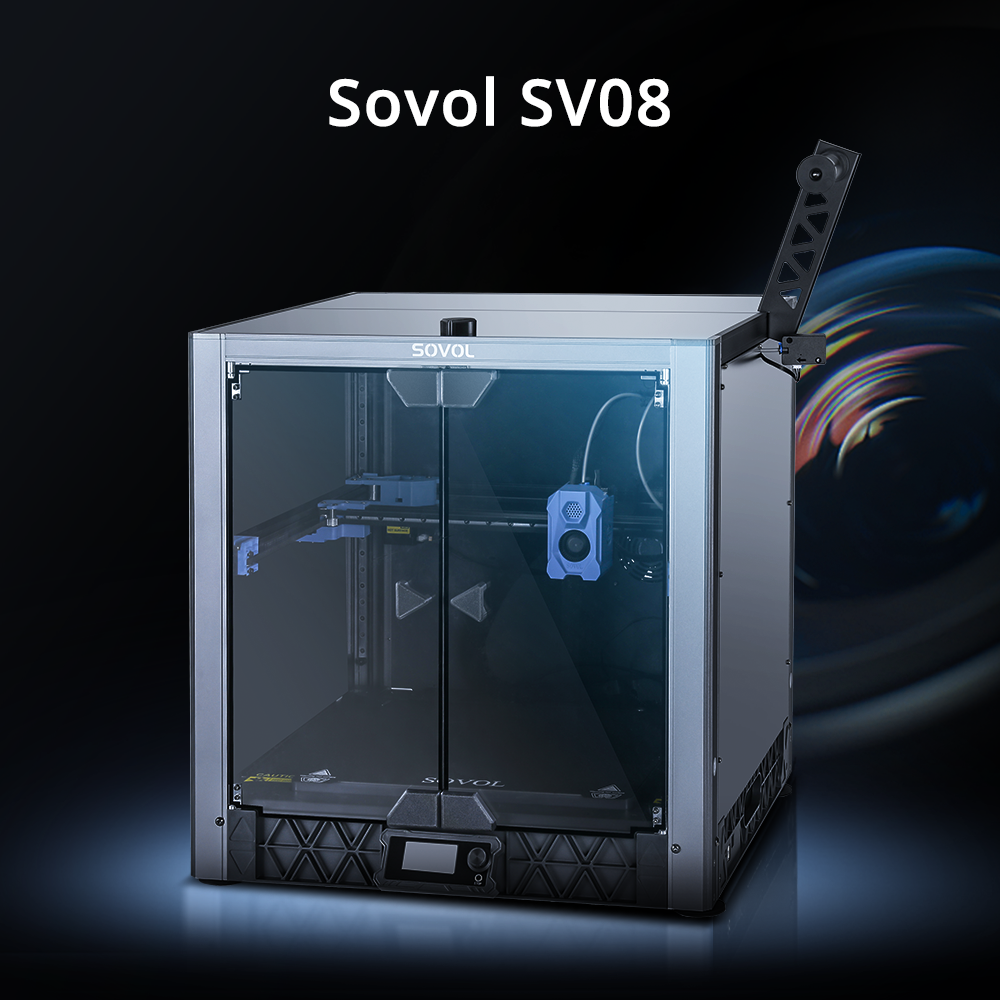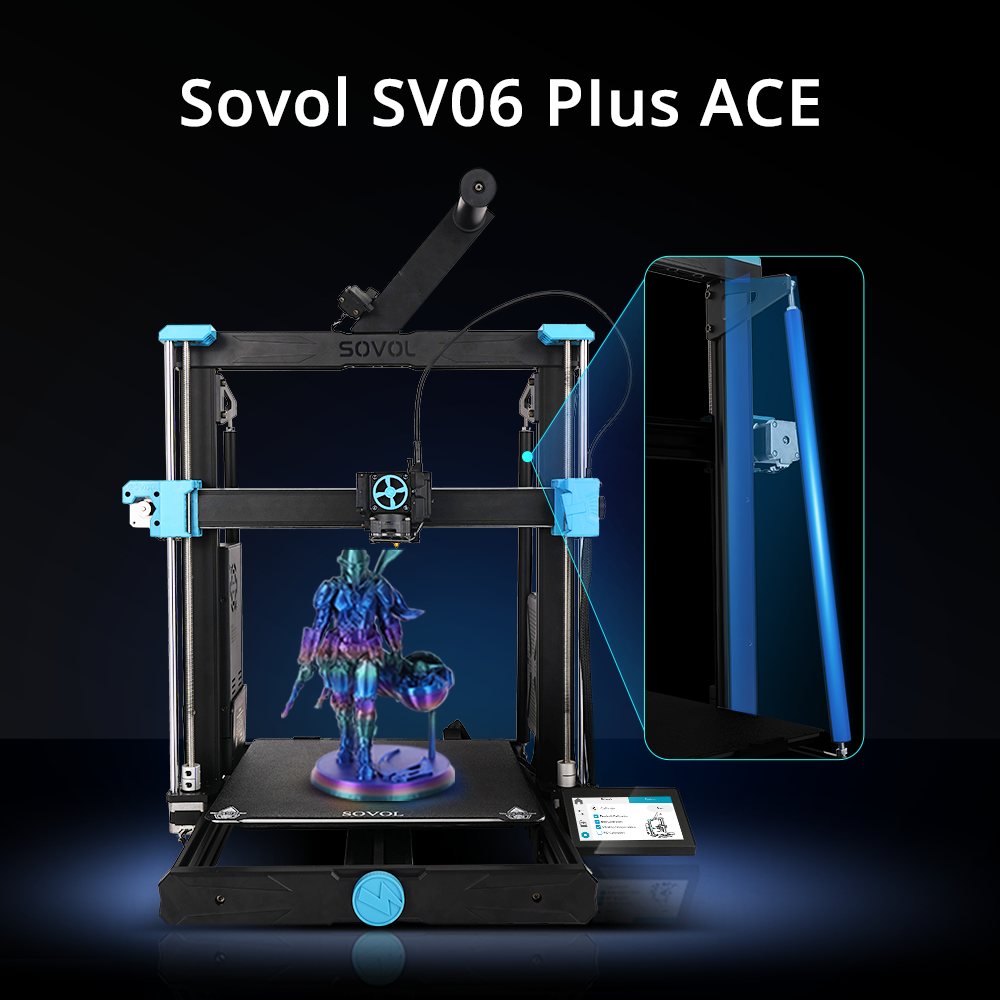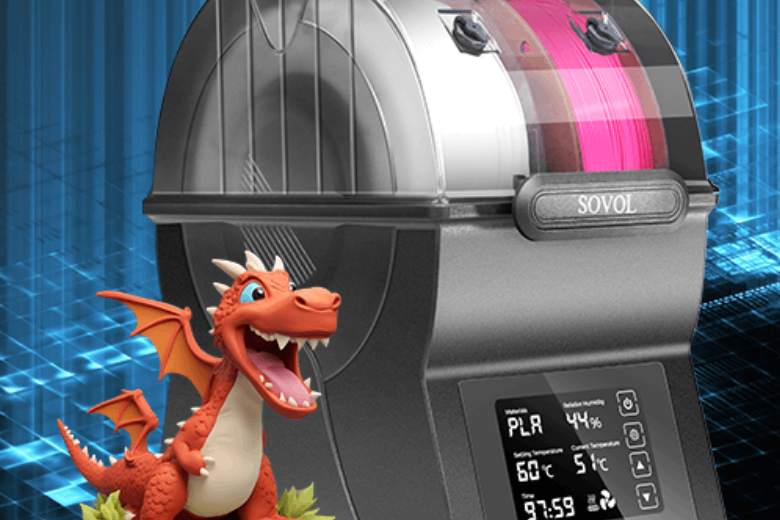A reliable filament dryer plays a crucial role in professional 3d environments. When you keep filament free from moisture, you avoid common issues such as jamming and friction. Moisture can cause color changes, filament aging, and even deformation during printing. Upgrading your system brings clear benefits:
|
Feature |
Benefit |
|---|---|
|
Prevents filament aging and color change, maintaining performance |
|
|
Heating and Dehumidifying |
Ensures stable melting during printing, reducing bubbles and deformation |
|
Airtight Storage |
Protects filament from moisture during storage and printing |
You gain better print quality and fewer failures when you address these factors.
Key Takeaways
- Upgrading your filament dryer prevents moisture-related issues, leading to better print quality and fewer defects.
- Using the correct drying temperature and time for each filament type is crucial to avoid damage and ensure effective moisture removal.
- Incorporating humidity control tools, like hygrometers and desiccants, helps maintain optimal conditions for filament storage.
- Regular maintenance of your filament dryer, including checking wiring and replacing desiccants, ensures reliable performance and longevity.
- Investing in a dedicated filament dryer provides better moisture control than DIY solutions, especially for sensitive filament types.
Filament Dryer Upgrade Benefits
Print Quality Improvement
Upgrading your filament dryer leads to a noticeable boost in print quality. When you use advanced drying techniques, you remove excess moisture from your filament. This step helps you avoid print defects and ensures your 3d models look sharp and professional. Recent studies show a strong link between proper drying and fewer defects in your results:
- Drying reduces moisture content, which keeps the mechanical properties of your filament strong.
- High moisture levels, especially above 80% relative humidity, cause a drop in tensile strength and increase porosity.
- Filaments exposed to high humidity often show warping and more defects, which lowers the quality of your results.
- Using the right drying methods can restore your filament and improve print quality for every project.
Professional 3d printing facilities often upgrade their filament dryers to achieve consistent results. These upgrades support a wide range of filament types and provide better control over drying conditions. You can see how these features help you get the best results in the table below:
|
Feature |
Description |
|---|---|
|
Expanded Filament Compatibility |
Supports many filament types, giving you optimal drying for each material. |
|
Enhanced Display |
Shows real-time temperature and humidity, so you can monitor drying quality easily. |
|
Smart Home Functionality |
Lets you control and check your dryer remotely for reliable results every time. |
Reduced Jamming and Friction
A high-quality filament dryer also helps you reduce jamming and friction during printing. Moisture in your filament can cause poor extrusion, which leads to jams and rough surfaces. Upgraded dryers tackle these issues by improving drying efficiency and keeping your filament in top condition. The table below highlights how drying affects your results:
|
Issue |
Impact of Moisture |
Benefit of Upgraded Drying |
|---|---|---|
|
Jamming |
Increases with moisture |
|
|
Friction |
Higher with wet filament |
Lower with efficient drying |
|
Flow and Adhesion |
Poor with moisture |
Improved with proper drying |
When you focus on drying, you improve print quality and avoid print defects. You get smoother results, fewer interruptions, and more reliable 3d printing every time.
Essential Filament Dryer Components
Upgrading your filament dryer transforms your 3d printing workflow. You gain more control over filament storage, drying, and overall print quality. Each component plays a unique role in keeping your filament in optimal condition for professional results.
Heating Element Upgrades
Heating elements form the core of any diy filament dryer. You need a reliable heat source to remove moisture from filament and maintain consistent drying. Many users choose heater pad and fan assemblies for their diy projects. These upgrades deliver stable temperatures and quick drying cycles, especially for hygroscopic materials like pla. Food dehydrators also serve as a popular diy filament dryer option. You can assemble one for about $30, making it a cost-effective solution for basic filament storage and drying needs.
|
Mod Name / Design |
Drying Mechanism |
DIY or Prebuilt |
Features |
Ideal For |
|---|---|---|---|---|
|
Silica Gel Tray Integration |
Passive |
diy |
Low cost, no power consumption |
Everyday use in mild climates |
|
Heater Pad + Fan Assembly |
Active |
diy |
Quick drying, stable temps |
Frequent users of hygroscopic filaments |
|
External Dryer Box Connection |
Active/Passive |
Prebuilt |
Plug-and-play, external control |
High-volume or multi-spool setups |
|
Sealed AMS Lid + Hygrometer |
Passive |
diy |
Monitors humidity, better insulation |
General AMS users |
|
Wi-Fi Controlled Smart Heater Mod |
Active + Smart |
diy + IoT |
Remote control, automation |
Advanced makers and tinkerers |
You must follow the recommended drying parameters for each filament type. For example, pla requires 45 ºC for 6 hours, while petg needs 55 ºC for 6 hours. Using the correct temperature and time prevents filament damage and ensures effective moisture removal.
Humidity Control Additions
Humidity control is essential for long-term filament storage. You want to monitor humidity and keep it as low as possible to prevent moisture absorption. Adding a standalone hygrometer to your diy filament dryer lets you track humidity levels in real time. Many advanced filament storage solutions offer adjustable humidity down to 10% RH and can hold multiple spools for efficient storage.
|
Feature |
Description |
|---|---|
|
Humidity Level |
Adjustable to as low as 10% RH |
|
Storage Capacity |
Holds multiple filament spools |
|
Monitoring |
Standalone hygrometer for active monitoring |
|
Direct Printing |
4 filament feed ports for direct printing |
|
Recovery Time |
Fast 2-hour recovery |
|
User Feedback |
Maintains humidity at 10%-13% after several days of operation |
You can enhance moisture control by adding desiccants to your diy filament dryer. Silica gel packs work well for everyday filament storage. For more demanding polymers, combine heat drying with desiccants for the best results. Vacuum drying is another option, but it is less efficient than heat. Adding desiccant to vacuum chambers improves moisture removal and keeps your filament ready for printing.
- Dry filament is crucial for successful 3d printing.
- Vacuum drying is less efficient than heat drying.
- Adding desiccant to vacuum chambers improves moisture control.
- Food dehydrators work for common materials but struggle with more demanding polymers.
Crimp Connectors and Wiring
Reliable wiring ensures your diy filament dryer operates safely and efficiently. Upgrading to high-quality crimp connectors reduces the risk of loose connections and electrical faults. You should use connectors rated for the voltage and current of your heating elements. Proper wiring also helps maintain stable temperatures during drying and prevents unexpected shutdowns.
When you upgrade wiring, always consider safety. Monitor for unusual noises or smells, which can signal overheating or chemical emissions. Keep your filament storage area ventilated to minimize exposure to fumes, especially when drying pla or other materials that release volatile compounds. Avoid touching moving parts or hot surfaces during operation. Keep a fire extinguisher and first aid kit nearby, and know how to power down your diy filament dryer quickly in an emergency.
Note: Quality wiring and connectors not only improve performance but also extend the lifespan of your diy filament dryer. Regularly inspect all connections and replace any worn components.
Choosing the right components for your filament dryer upgrade ensures consistent drying, safe operation, and optimal filament storage. You protect your investment in filament and achieve professional results with every print.
Filament Dryer Box Moisture Control
Silica Gel Packs and Desiccants
You can boost the performance of your filament dryer box by adding silica gel packs or rechargeable desiccants. These materials absorb moisture from the air, lowering the moisture content inside the box. Silica gel works well because it traps moisture on its surface, thanks to its large surface area. In most cases, silica gel can absorb up to 40% of its weight in moisture, but activated alumina offers even higher effectiveness for maintaining low humidity levels. Orange indicating silica gel absorbs up to 15% by weight before it needs recharging, while blue indicating silica gel changes color as it becomes saturated. This color change helps you know when to recharge or replace the desiccant.
- Silica gel works best at temperatures up to 120°F (49°C).
- In high humidity, silica gel saturates quickly, so you may need to recharge or replace it more often.
- Rechargeable desiccants offer a sustainable option for long-term use in your filament dryer box.
Airtight Sealing Methods
Airtight sealing is critical for effective moisture control in your filament dryer box. You should choose containers with tight lids or rubber gaskets to block humid air. Weather-sealed plastic bins and vacuum bags work well for storing multiple spools. The AMS system, known for its airtight design, helps keep filament dry during storage and printing. Airtight containers prevent outside moisture from entering, protecting your filament from environmental humidity.
|
Sealing Method |
Benefit |
|---|---|
|
Rubber gasket bins |
Enhanced moisture protection |
|
Vacuum bags |
Prevents moisture exposure |
|
Tight lids |
Blocks humid air |
Transferring Hot Filament
After drying, you should transfer filament while it is still hot to your filament dryer box. This step reduces the risk of moisture re-absorption. If you notice signs filament needs drying, such as brittle texture or popping sounds during 3d printing, repeat the drying process. Leaving the filament dryer box open for a short time after drying can help remove any remaining moisture. Always use humidity monitoring to track the environment inside your box and adjust your desiccant as needed.
- High humidity can cause rapid moisture absorption, especially in polycarbonate filaments.
- Keep relative humidity below 30% for best results.
- Proper filament drying and storage prevent print defects and maintain mechanical properties.
Efficient Filament Dryer Best Practices
Correct Drying Temperature and Time
You achieve the best results when you set the right drying temperature and time for each filament type. Using the correct settings prevents filament deformation and ensures that moisture leaves the material completely. If you use too much heat, you risk damaging the filament. Too little heat leaves moisture behind, which can cause print defects.
Here is a quick reference table for popular 3d filament types:
|
Filament Type |
Drying Time (h) |
|
|---|---|---|
|
PLA Basic/PLA Matte |
50 |
8 |
|
PETG, PETG-CF |
60-70 |
8 |
|
ABS, ASA |
75-85 |
8 |
You should always check the manufacturer's recommendations before starting the drying process. High-temperature filaments may need specialized equipment to reach the required settings. If you use an efficient filament dryer, you can control both temperature and time with precision. This control helps you remove moisture without risking filament quality.
Heat Drying vs. Other Methods
You have several options for removing moisture from filament. Each method offers unique benefits and limitations. Specialized filament dryers give you precise control over temperature and drying time. Many users also use ovens or food dehydrators for drying. DIY dry boxes provide a custom solution for hobbyists who want to manage moisture on a budget.
|
Method |
Description |
|---|---|
|
Specialized Filament Dryers |
Designed specifically to extract moisture, offering precise control over temperature and drying time. |
|
Drying in an Oven |
An accessible method for many users, allowing for effective moisture removal. |
|
Food Dehydrators |
A budget-friendly option suitable for low-temperature filament drying. |
|
DIY Dry Box |
Custom solutions for hobbyists to manage filament moisture effectively. |
|
Storage Tips |
Use airtight containers with desiccants and keep humidity below 20% to prevent moisture absorption. |
|
Common Mistakes |
Avoid leaving lids open, not checking desiccants, and storing in sunlight to maintain filament quality. |
All filament dryers work by lightly heating the filament material to evaporate moisture, often enhanced by features like timers, temperature controllers, and fans.
The analysis highlights that the freeze dryer is highly effective at removing moisture quickly and thoroughly due to its combination of heat and vacuum, which significantly lowers the boiling point of water. In contrast, the oven method relies solely on heat and air circulation, which may take longer to remove all moisture.
The oven method is widely used and easily accessible, while the freeze dryer, although effective, is typically more expensive and less commonly available.
You should choose the method that fits your needs and budget. For most users, an efficient filament dryer or oven provides reliable results. If you work with high-performance or specialty filaments, consider investing in advanced drying equipment.
Maintenance and Troubleshooting
You keep your efficient filament dryer working at its best by following a regular maintenance routine. Proper care ensures that your dryer removes moisture effectively and protects your filament investment.
- Maintain low relative humidity for at least 24 to 48 hours after the dryer indicates low RH.
- Use vacuum dryers for fast and consistent drying. These dryers reduce moisture vapor pressure, which speeds up the drying process.
- Never exceed the glass reflow temperature of the filament. For most materials, 70ºC is a safe upper limit.
- Different filament types require specific drying settings for optimal results.
- High-temperature filaments may need specialized drying equipment, such as the AMS HT, because some dryers cannot reach the required temperature.
- Regularly check and replace desiccants in your storage containers.
- Inspect wiring and connectors for signs of wear or damage.
- If you notice filament deformation or jamming, review your drying settings and maintenance steps.
You ensure reliable 3d printing when you follow these best practices. An efficient filament dryer, combined with the right drying methods and regular care, keeps your filament dry and ready for every project.
Upgrading your filament dryer gives you better control over moisture, which leads to sharper 3d prints and fewer imperfections. You see stronger layer adhesion and smoother surfaces when you use precise drying methods. Dedicated dryers remove moisture more effectively than DIY solutions, especially for 3d printing with sensitive filament types. You can maintain consistent results and preserve filament quality over time.
Checklist for Immediate Upgrades and Maintenance:
- Install a reliable heating element and humidity monitor.
- Use airtight containers and fresh desiccants.
- Check wiring and connectors for safety.
- Set correct drying temperature and time for each filament.
- Inspect and maintain your filament dryer regularly.
FAQ
What is the best way to tell if filament needs drying?
You can check for brittleness, popping sounds during printing, or visible steam. A hygrometer inside your storage box also helps you monitor humidity. If you see print defects, dry your filament before your next project.
Can you use a regular food dehydrator for filament drying?
Yes, you can use a food dehydrator for many filament types. Set the temperature according to the filament manufacturer’s guidelines. Always monitor the process to avoid overheating or damaging your filament.
How often should you replace desiccant packs?
Replace or recharge desiccant packs when the color indicator changes or humidity rises above 20%. Regular checks keep your filament dry and ready for printing.
Is it safe to leave filament in the dryer for extended periods?
You can leave filament in a dryer with temperature and humidity control. This setup prevents moisture absorption. Avoid overheating by following recommended settings for each filament type.







